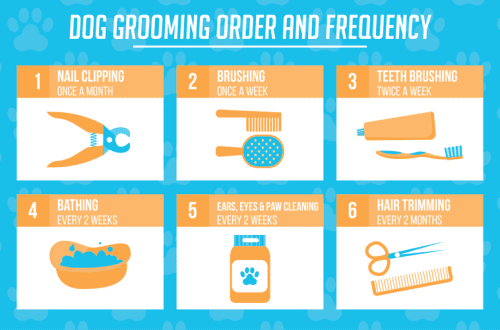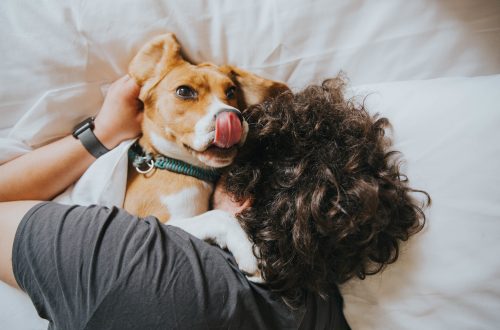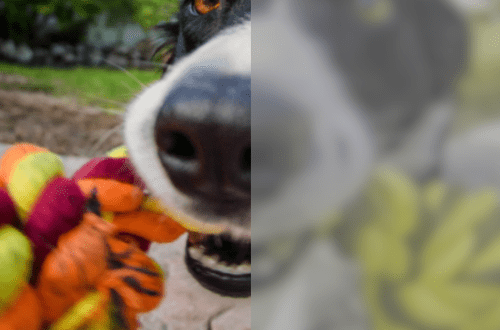
How to teach a puppy to a leash: instructions with tips
Contents
Why does a dog need a leash?
The dog must walk daily, and the rules for its walking are regulated by law. So, with a leash, you need to enter and leave the premises, a muzzle is additionally put on for representatives of large breeds. The length of the leash should allow the owner to control the actions of the pet. Be sure to keep the dog on a leash and when crossing a pedestrian crossing, sidewalk, in crowded places.
The leash will allow you to control the puppy, will not let him run away, get lost or get hit by a car, help the owner protect the dog from other animals, inadequate people and children. It is necessary to show the pet who is in charge in the house, and to accustom it to ammunition from the first days, so as not to get an uncontrollable dog later. If the collar, as a rule, does not arise, then accustoming the puppy to the leash turns out to be a more difficult task. Detailed instructions will help you adapt your pet to the leash, and joint walks will be safe and fun!
Choice of leash and collar
As soon as a puppy appears in the house, he needs at least a minimum set of his own things: a bowl, food, hygiene items, a bed and, of course, a collar and a leash.
Depending on the breed, age and character of the dog, leashes are used from various materials (leather, silk, tarpaulin, nylon, nylon, metal) and different types (harness, tape measure, walker, fold, chain). However, for all puppies, experts have developed general recommendations for the selection of ammunition:
- the very first collar for a puppy should be light, soft, comfortable, non-rubbing;
- a harness is preferred as the first leash;
- the length of the leash for the puppy should not exceed 1,5 m;
- at the beginning of training, avoid retractable leashes, heavy chains, sliding cords that could scare the baby;
- do not take status collars made of leather for outgrowth. The accessory must be the right size for the dog, not tightly fastened around the neck, but not removed with a paw over the head;
- Do not put newly purchased accessories on your puppy. Purchases must first lie down in a ventilated area so that extraneous odors go away;
- before trying on new ammunition, the puppy must get to know it – examine it, smell it.
How to train a puppy to a collar
Before you teach a puppy to a leash, you need to teach him to wear a collar. This is usually not a problem, since newborn puppies are marked with colored threads, which contain information about their time of birth and weight. When the baby grows up a little, the thread is replaced with a ribbon. Thanks to this scheme, the puppy begins to get used to wearing a collar from childhood, the accessory does not seem uncomfortable to him.
If you got a baby who is not familiar with ammunition, follow the same system – tie a ribbon, and then, after 14 days, add a collar on top. The collar is smooth, lightweight, with the ability to adjust the length.
Pay special attention to how you tighten the collar – two fingers should pass between the puppy’s neck and this accessory. If it is too tight, it can make breathing difficult or interfere, and the pet will simply remove too loose ammunition.
Important: for a puppy, you can not use a harness as a replacement for a collar. Due to improper pressure, fragile bones of the chest and joints of the spine can be deformed. The exception is a special puppy harness vest.
How to teach a puppy to walk on a leash
It is better not to delay the solution of the problem, how to teach a puppy to a leash. At 1,5-2 months, it will be much easier for a dog to learn to walk on a leash than in adulthood.
Remember: during training, not only the dog is training, but also the owner. Every day cultivate goodwill, patience, be attentive to your pet. The new owner must get used to handling the leash: shorten it to protect the puppy from danger, or let go so that the baby runs.
Teaching at home
Give your new family member a couple of days to get comfortable in the house and start exercising. First, attach a light leash that the puppy will wear at home. 30 minutes a day is enough. It is desirable that the baby does not pay attention to the accessory and just runs around the house with it. You can distract your pet with a game or a treat, but make sure that the puppy does not play with the leash – this is not a toy, and such an association should not be fixed.
Note: It is not recommended to leave your pet with a fastened leash unattended. He can get tangled in the cord, chew on it or be afraid of rustling. If the puppy is worried and angry, you need to remove the leash after he calms down in order to avoid whims in the future.
The leash should hang freely, it needs to be pulled lightly from time to time. It will be useful to involve another family member in teaching the baby, who would call the baby to him and encourage him when he comes up.
We go out into the street
At 3 months, the dog undergoes the first vaccination, and from that moment a new stage begins – walking on the street. It is necessary to accustom a puppy to a leash from the first walks. If before that the baby followed you on your heels, then a lot of discoveries await him on the street – other people and animals, unusual smells and sounds, cars. Something can frighten the baby, and he will run in an unknown direction, so the leash is, first of all, a matter of dog safety.
The very first “outings” on the street should be frequent (5-6 times a day) and short (10-15 minutes, but no more than 30 minutes). Add 5 minutes every 4 weeks. Walk behind the puppy “on the heels” and make sure that the leash does not stretch.
If the pet wants to go to the trash or to another “doubtful” place – take it in your arms, or distract it with a game. Never pull on the leash. The puppy should have the following associative array: “leash – cheers! – festivities.
Teaching your dog not to pull on the leash
Now you need to teach your puppy not to pull on the leash while walking. Usually, experts distinguish loyal and hard methods.
- The gentle technique is to stop every time the puppy pulls on the leash. Wait for the pet to look at you, calmly and kindly say: “Okay.” Now beckon the baby with a treat and at the same time slightly change the trajectory of movement. After about a month, the puppy will realize that due to the tension on the leash, you are not going faster, but rather stop, so there is no point in pulling him.
- The “snatch method” is suitable for 4-5 month old puppies of large, hunting and fighting dog breeds. For this, a children’s parfors (a prickly collar with spikes) and a kapron walking leash are used. Release the animal 2-3 meters away from you, and as soon as the leash is taut, make a jerk. After a week, the pet will understand that pulling on the leash brings discomfort.
Puppy Training Rewards
The experience of cynologists and dog owners shows that it is possible to teach a puppy something only with the help of patience and affection. This wisdom should be remembered by everyone who is going to teach a puppy to a leash. Snacks, toys and just stroking during training can work wonders.
Be sure to praise the puppy when he comes to your call. Just don’t overdo the treats so your dog doesn’t overeat.
If the pet refuses to comply with the requirements, breaks out or rests, then he should be left without a treat, but you can distract him with toys. During the sabotage, talk to the puppy in a calm, firm, stern voice.
What to do if the dog does not like the leash
When teaching a puppy to walk on a leash, inexperienced owners make mistakes. They can be overly strict, and negative emotions are fixed in the mind of the dog, or, conversely, they feel sorry for the baby, which is why they do not show perseverance and perseverance. Discomfort due to improperly selected ammunition can also discourage the puppy from any desire to walk on a leash.
Is your dog being naughty and refusing a leash? Check if one of the following is the cause:
- the collar is too tightly fastened, and, as a result, every step of the dog is accompanied by pain and suffocation;
- the puppy was allowed to play with a leash, and now he perceives it as a toy and refuses to walk in it – buy a new one;
- they could not restrain themselves and slapped the pet with a leash, and after that he refuses to walk on it – the use of force is unacceptable. Now slap the accessory on your knee and watch your pet’s reaction. If the puppy flattens his ears, he is afraid of the leash. A special harness for puppies or a lighter leash will help;
- the puppy’s natural desire to play was completely ignored, he was only forced to walk alongside – do not forget about positive emotions! The dog can not wait to run and frolic. If you are going to combine a walk with a puppy and your business, then first – the interests of the dog.
If you did everything right, but you still couldn’t teach the dog to the leash, contact the cynologist for help! Your future peace of mind and the safety of your pet depend on it.





